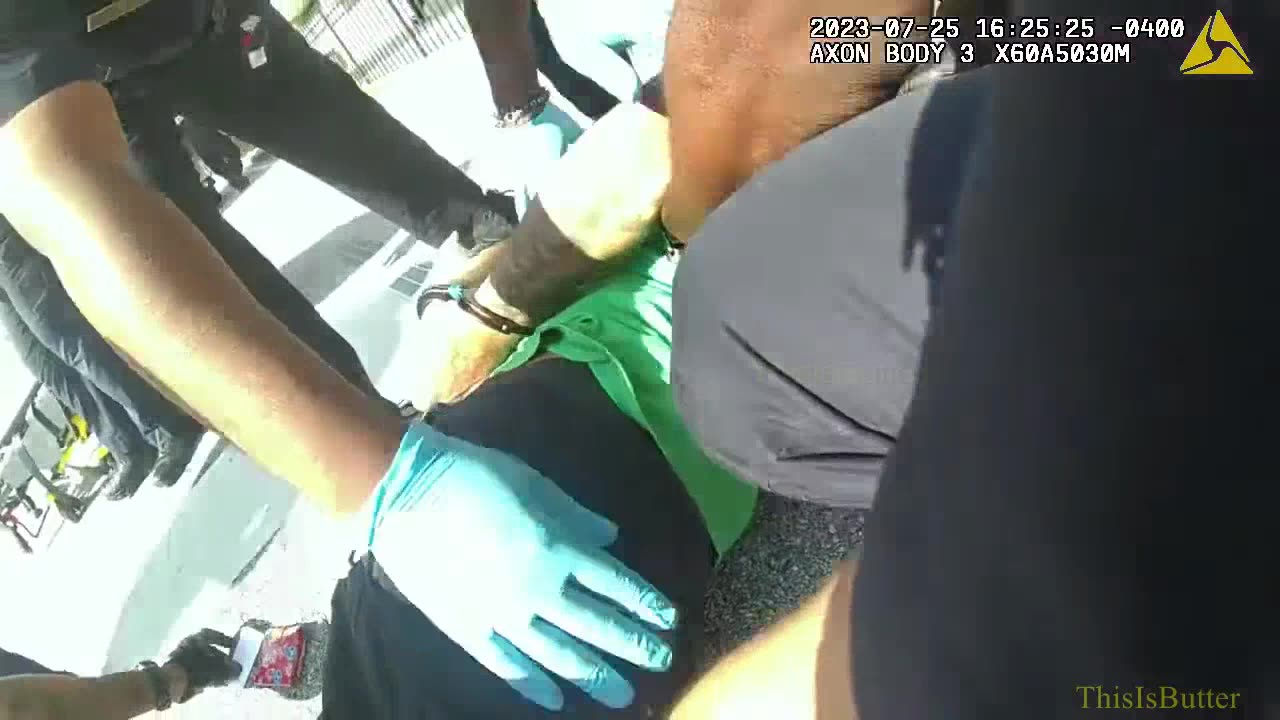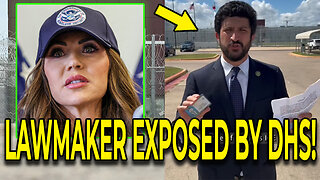Premium Only Content

Bodycam shows Baltimore medic warning against restraining Trea Ellinger facedown before his death
A Baltimore paramedic warned officers on the scene of a July police response that preceded a man’s death in custody not to restrain the 29-year-old in a stretcher with his face down, body camera footage released Tuesday shows.
The footage released by the Maryland Attorney General’s Office does not show what happened inside the ambulance, where investigators say Trea Ellinger, a Glen Burnie resident, became unresponsive before dying at a hospital. The clips from the perspective of two different Baltimore Police officers who responded show Ellinger being placed on a stretcher, first on his side, but ultimately rotating onto his stomach as he was being restrained.
Baltimore Police and the Attorney General’s Independent Investigations Division, which probes deaths in police custody statewide, are investigating the July 25 encounter.
In a news release last month, the IID said police and paramedics responded to the 200 block of South Howard Street, next to the Baltimore Convention Center, after a 911 caller reported a man was “lying in the middle of the street trying to kill himself and ‘fighting people.’” MTA Police and Baltimore Police officers placed the man, identified later as Ellinger, in handcuffs and onto the stretcher on his side.
The officers and Baltimore Fire Department medics restrained him onto the stretcher, and he was in a prone position while being loaded into the ambulance, the IID said. While intended to help patients in respiratory distress, the practice of restraining people facedown is banned by some agencies, including BPD, as it can lead to breathing difficulties and cardiac arrest. The Office of the Chief Medical Examiner has not yet determined the cause and manner of Ellinger’s death, a spokesperson said Tuesday.
The footage released Tuesday shows Baltimore Police officers Sharrod Mobley and Ryan Barnes-Klipa’s response to the scene for around six minutes each. Ellinger is seen in the right turn lane surrounded by MTA Police officers, who are not equipped with body cameras, as the Baltimore Police officers arrive.
The fire department medic, who investigators did not identify, twice cautioned officers on how Ellinger should be positioned, the video shows.
“We just don’t want him facedown,” the paramedic says as officers are holding Ellinger down on his side. He proceeds to insert a syringe into Ellinger’s arm.
“As long as he’s not laying facedown, that’d be great,” the medic says minutes later as officers proceed to lift Ellinger onto a stretcher, where he is placed on his side.
But as the officers and paramedics tighten stretcher restraints on Ellinger for about a minute, he gradually appears to shift toward a prone position. He appears to be laying on his stomach with his head raised as he is loaded onto the ambulance. Investigators said Mobley’s body camera remained activated in the ambulance and captured Ellinger receiving medical treatment, though they did not release that portion publicly “due to protections against the release of medical information under Maryland and federal law.”
-
 LIVE
LIVE
JustPearlyThings
40 minutes agoPearl Reacts: 20 Black Conservatives DESTROY Radical Feminist Activist | Pearl Daily
378 watching -

Robert Gouveia
3 hours agoTrump WINS Appeal! 🚨 Letitia James BLOWN OUT! Biden Scandal BOMBSHELL!
8.84K7 -
 LIVE
LIVE
Barry Cunningham
3 hours agoBREAKING NEWS: PRESIDENT TRUMP ON PATROL IN WASHINGTON D.C.
2,214 watching -
 LIVE
LIVE
megimu32
1 hour agoOTS: Pimp My Ride LOL - Insane Mods & Car Stereo Nostalgia
72 watching -
 1:29:46
1:29:46
Glenn Greenwald
3 hours agoIsraeli Official Caught in Pedophile Sting Operation Allowed to Flee; Israeli Data: 83% of the Dead in Gaza are Civilians; Ukrainian Man Arrested over Nord Stream Explosions | SYSTEM UPDATE #503
54.6K38 -
 15:27
15:27
robbijan
4 hours ago $1.12 earnedThe Emperor’s New Labubu & The Spiritual War Behind Everything
11.5K13 -
 16:40
16:40
T-SPLY
1 day agoLiberal Lawmaker Gets Busted Lying - D.H.S Brings Receipts!
10.8K8 -
 LIVE
LIVE
SavageJayGatsby
1 hour agoMario Party with Friends | Goal to 100 Followers | 300 Weekly Goal for Spicy Bites!
22 watching -
 LIVE
LIVE
Mally_Mouse
3 hours agoLet's Play!! - Mario Party Jamboree w/FRIENDS
70 watching -
 26:53
26:53
Stephen Gardner
1 hour ago🔥Dems NEW PLOT Against Trump EXPOSED!
5.01K5